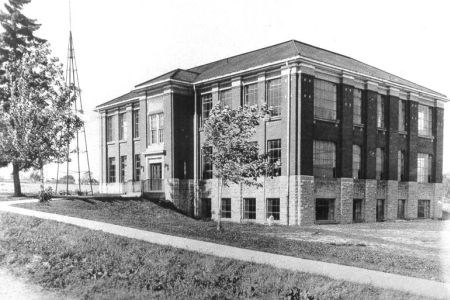In 1912, mining companies in Cobalt were looking for trained technical workers but there weren't many in the area.
To address the need, part-time evening classes were started in the town, at the YMCA, but they didn't pan out. The classes were moved to the high school in Haileybury and two years later, they were offered on a full-time basis.
In 2012, the internationally renowned Haileybury School of Mines, as part of Northern College, celebrates its 100th anniversary.
“The school had its beginnings in Cobalt, however short that was, but has been in Haileybury ever since,” said Brian Dobbs, a professor at the Haileybury campus of Northern College.
The avid historian, who has amassed a great deal of material over the years about the School of Mines, teaches in the instrumentation program. However, he has yet to compile his research into a book. His binders house a collection of photos, documents and notes that contain a detailed account of the school and its teachers from its inception.
“By 1914, the mining program at the high school was three years in length and graduates got a high school diploma, but in the mining stream,” Dobbs said.
Students came to the school by streetcar from Cobalt and New Liskeard or by train from the outlying areas, such as Englehart. But, with the onset of the First World War, a majority of the students left to serve overseas.
The school was in limbo for the duration of the war but at the end, the young veterans returned and the government stepped in to help retrain them.
“Mining was a natural choice for Northern Ontario,” Dobbs said. “And enrolment was up again.”
The basement could not hold all the students so a new building was constructed, with a processing facility, which was aptly called The Mill. That same facility is currently part of the Haileybury campus.
“The building was funded through donations from the industry,” he said.
In 1931, the building expanded by duplicating one whole side, due to the demand for graduates from the other mining camps such as Timmins and Sudbury.
“The hallmark of the school is that students weren't trained for individual aspects but got a well-rounded education,” Dobbs said. “They took a bit of everything so they were very employable.”
Some of the graduates coming out of the school, prior to the Second World War, were pioneers of the Canadian mining industry. These included J.M Cunningham-Dunlop, the vice-president of Ventures, the forerunner to Falconbridge); William Durell, general manager of the Iron Ore Company of Canada; Murray Watts, prospector and developer, and recipient of the Order of Canada; and Alex Mosher, prospector and one of the founders of the Prospectors and Developers Association of Canada.
The Second World War lured the young men away from the communities, and the school, and a lack of students forced its closure in 1943. It reopened as the Provincial Institute of Mining, and separate from the high school, in 1945, and returning veterans filled the classrooms.
“There was a single female application at that time,” Dobbs said, “but she was quickly discouraged because, (according to historical accounts), she could not be properly outfitted for all types of mining work.”
Ossie Walli became the new principal of the institute in 1945, a role he kept until 1967 when he became the first president of Northern College. He retired in 1969 and long-time teacher at the Haileybury School of Mines, Jack Frey, became the new dean and retired in 1989.
“If there are two people who held the torch high for the school, it was Walli and Frey,” Dobbs said.
In the 1990s, the campus became more diversified and more programs were added since the mining school had fewer students.
Currently the school offers one program, mining engineering technician, which is delivered in a modular format and also through distance education to allow students to maintain their employment.
“The School of Mines had always been known as the place to come,” Dobbs said. “And at one time, more than a quarter of the graduates were international.
“Ossie Walli and Jack Frey really put the school on a world stage and made it world renowned. They devoted a great deal of their lives to that school and it's a testament to them, and many others, that it still exists today.”




